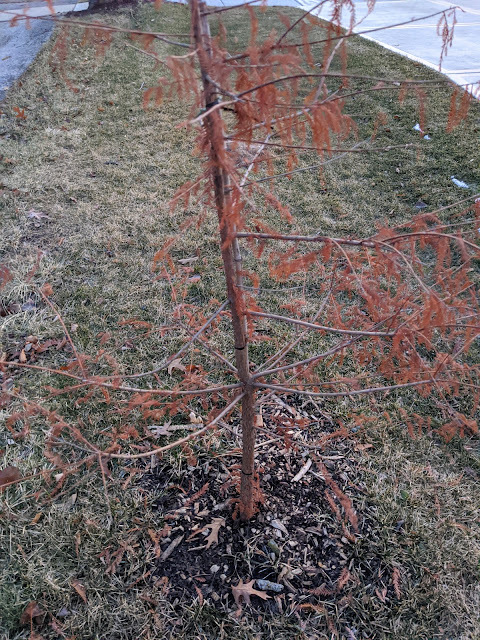Front Yard Chanticleer Pear - April 2020

This troubled tree - in our front yard - appears to finally have overcome transplant shock and a clay bowl to get back on schedule. At least....that's my hope. You can see the flower buds that are set to explode in the photo above. This is the second tree in this location after the first one that was installed when we built the house died. This one , too, would have died if I didn't intervene. I'm pretty sure that digging out a little channel that broke up the clay bowl underneath this tree is what saved it from drowning itself. The last time I posted about this pear tree was last Summer when it was leaf'ing out . It didn't look super healthy and robust, but was green. I trimmed many of the dead limbs off, but left everything else that was leaf'ing. Prior to last year, this thing was all out of cycle. In November of 2018 - YES! November... it flowered . In terms of timing, this flowering pear tree is showing buds...






